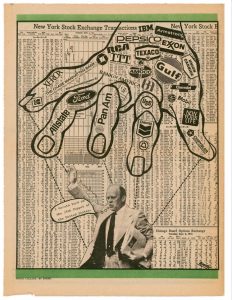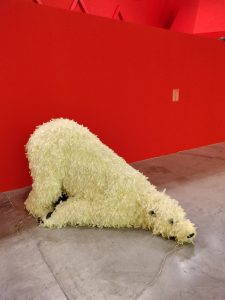London-based interaction designer Crispin Jones has designed a PC for Poets — technically, it’s a UMPC (Ultra Mobie Personal Computer) and he did it for the Japanese tablet PC company PBJ.
Yesterday, I got a chance to attend 100% Design Tokyo, talk with Mr. Jones, hold the artifact in my hands, and also experience how it feels to use the special stylus — that was the most emotional part of my first interactive experience with this fully working device. (For those who are interested in 100% Design Tokyo, Pingmag has a series of articles on this and other relevant events.)
PCs for poets go beyond the purely utilitarian, much like suzuribako, the traditional Japanese writing boxes — Indeed, the design was partly inspired by suzuribako. So, that seems to explain why the stylus felt rather soft, giving me the impression of using a slightly hardened, elastic calligraphy brush.
Currently, the device’s operating system is Windows XP-based and many existing office type application tools seem ill-fitted for the device’s elaborate physical, functional, and aesthetic design. I hope to see integrated software tools that allow us to “write and paint like poets” in the future.
What appeared to my eyes quite interesting (and perhaps very novel) was the visually appealing tactile patterns on the underside. When you use the device in a public space, its underside tends to be the device’s “face” (i.e., people around you see the underside, not the front side) and becomes part of how you present yourself to friends and strangers. So, the design cares about what’s often overlooked — these physical surfaces that can influence people’s social spaces.
Some of us may need “swiss army knife” UMPCs that allow us to do all we can do with PCs, using integrated pointing devices, tiny keyboards, and various buttons and expansion slots. But others — e.g., ones who prefer beautiful “sashimi knife” UMPCs — may not. Both kinds would be equally valuable, and I’m happy to see a device like this, with astonishing simplicity. Also, it would be more inclusive than overly complex user interfaces that can scare off the technophobic.

The project was managed by Tomohiro Okada from Y’Innovation and produced for PBJ. And Okdada-san indeed is actively working to bridge gaps between artistic and business-oriented projects. I’m glad that he is working with Crispin.
Among the many interactive art projects of Mr. Crispin Jones, I particularly like Social Mobiles as well as An Invisible Force. Here are some related wmmna posts: Fortune-telling desk, The 7 Mr Jones Watches, Tavofono, The frustrating keycase, Katazukue, the tidy table, Electrical Fantasista, Welcome to the world of spooky keyboards.










